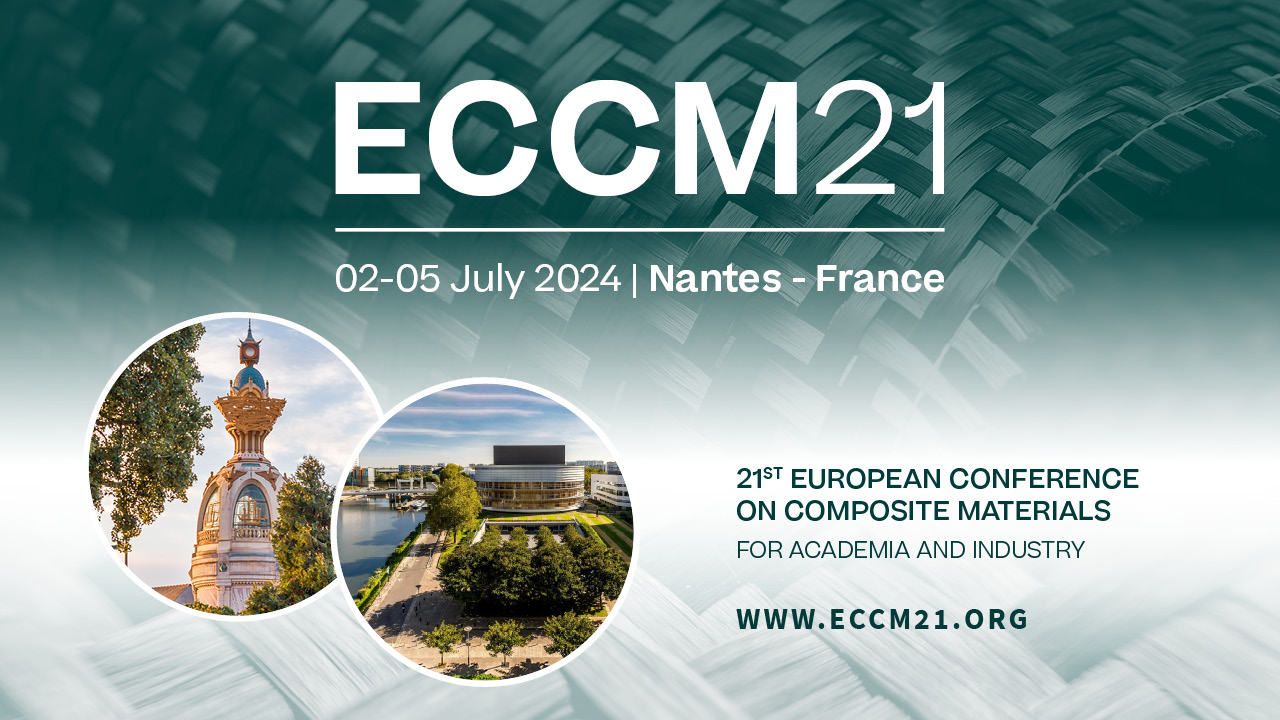Influence of tape composition on the determination of crystallinity via DSC
Topic(s) : Manufacturing
Co-authors :
Ines MÖSSINGER (GERMANY), Yannick SCHÄFER (GERMANY), Ashley CHADWICK (GERMANY)Abstract :
Thermoplastics as matrix materials in fiber-reinforced composites continue to gain more and more attention due to their weldability and reusability compared to thermoset materials. High-speed manufacturing through processes like in-situ automated fiber placement (AFP) add to the attractiveness, though in-situ AFP is particularly susceptible to deviations and irregularities in the initial prepreg material composition.
The high-speed nature of AFP manufacturing results in steep thermal gradients for both heating and cooling of the material during the deposition process. This results in a non-homogenous heating of the prepreg material volume, the degree of which being determined by the prepreg thickness (or fiber areal weight (FAW)) and the deposition (layup) speed. As the matrix properties, in particular the bulk crystallinity, of semi-crystalline thermoplastics is dictated by the thermal profile during manufacturing, no two prepregs can be assumed to behave identically or require identical process parameters to yield maximum part performance.
In addition to the FAW, prepregs can differ from one another significantly in the sizing and distribution/homogeneity of reinforcing fibers within the material cross-section. Severe inhomogeneity can lead to suboptimal heating from laser-based heat sources as well as erroneous calculations of the part crystallinity or interpretations of mechanical properties. Finally, the interaction between matrix and fibers directly influence the development of crystalline morphologies and subsequent mechanical properties, making obtaining accurate information on the prepreg composition critical to the entire performance evaluation process.
Within this study, the bulk crystallinity of different CF/LM-PAEK prepreg tapes with varying fiber volume content (FVC) and FAW are investigated using differential scanning calorimetry (DSC). This involves exposing different prepreg samples to isotherms above the matrix melting temperature to recreate the AFP process and in particular simulate different deposition speeds. As material homogeneity is directly linked to the interpretation of DSC results, parallel samples are first exposed to the same temperature profile in an (non-DSC) oven and subsequently micro graphed to assess whether the fiber distribution changes significantly under relaxed matrix conditions.
A key result of this work is to assess the bulk crystallinity determined using the FVC provided in the material datasheet in comparison to the FVC measured directly from the material microsections. To-date, variations of up to 15-20% have been observed, making the inclusion of these measurements to an otherwise standardised process highly advantageous.
This analysis aims to accurately represent the fiber-matrix distribution in given specimens and to determine the sensitivity of crystallinity to FVC and FAW. The DSC and microanalysis results are currently ongoing and will be presented in the final paper.
The high-speed nature of AFP manufacturing results in steep thermal gradients for both heating and cooling of the material during the deposition process. This results in a non-homogenous heating of the prepreg material volume, the degree of which being determined by the prepreg thickness (or fiber areal weight (FAW)) and the deposition (layup) speed. As the matrix properties, in particular the bulk crystallinity, of semi-crystalline thermoplastics is dictated by the thermal profile during manufacturing, no two prepregs can be assumed to behave identically or require identical process parameters to yield maximum part performance.
In addition to the FAW, prepregs can differ from one another significantly in the sizing and distribution/homogeneity of reinforcing fibers within the material cross-section. Severe inhomogeneity can lead to suboptimal heating from laser-based heat sources as well as erroneous calculations of the part crystallinity or interpretations of mechanical properties. Finally, the interaction between matrix and fibers directly influence the development of crystalline morphologies and subsequent mechanical properties, making obtaining accurate information on the prepreg composition critical to the entire performance evaluation process.
Within this study, the bulk crystallinity of different CF/LM-PAEK prepreg tapes with varying fiber volume content (FVC) and FAW are investigated using differential scanning calorimetry (DSC). This involves exposing different prepreg samples to isotherms above the matrix melting temperature to recreate the AFP process and in particular simulate different deposition speeds. As material homogeneity is directly linked to the interpretation of DSC results, parallel samples are first exposed to the same temperature profile in an (non-DSC) oven and subsequently micro graphed to assess whether the fiber distribution changes significantly under relaxed matrix conditions.
A key result of this work is to assess the bulk crystallinity determined using the FVC provided in the material datasheet in comparison to the FVC measured directly from the material microsections. To-date, variations of up to 15-20% have been observed, making the inclusion of these measurements to an otherwise standardised process highly advantageous.
This analysis aims to accurately represent the fiber-matrix distribution in given specimens and to determine the sensitivity of crystallinity to FVC and FAW. The DSC and microanalysis results are currently ongoing and will be presented in the final paper.

